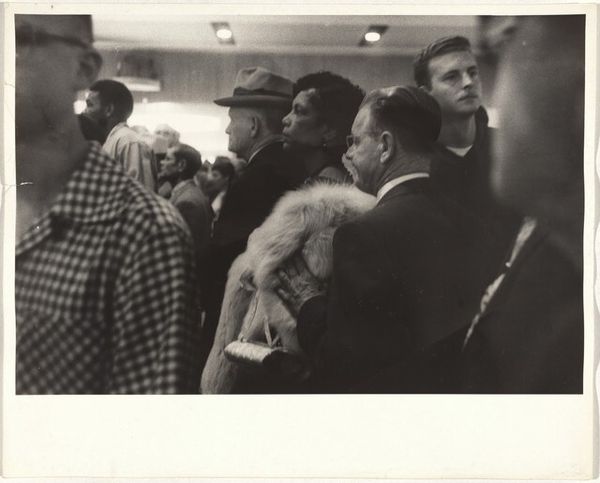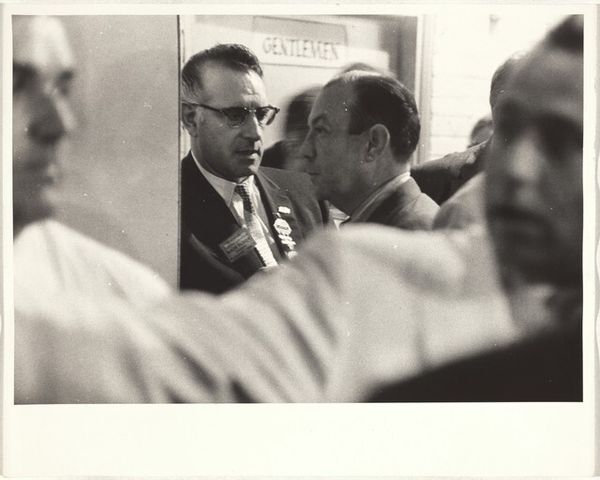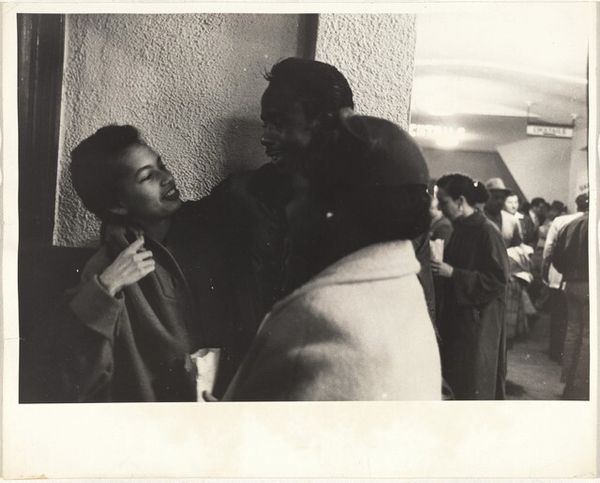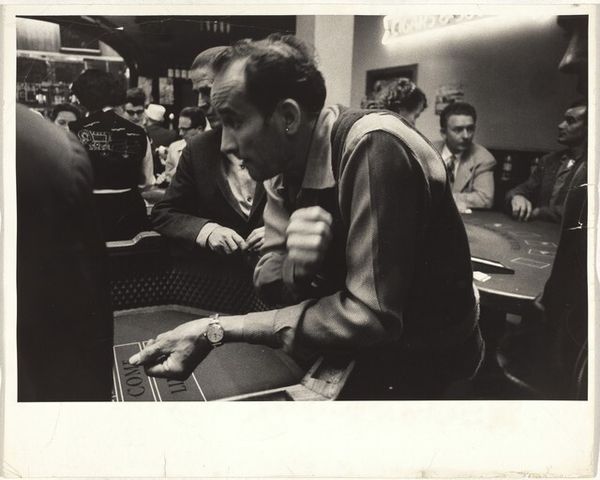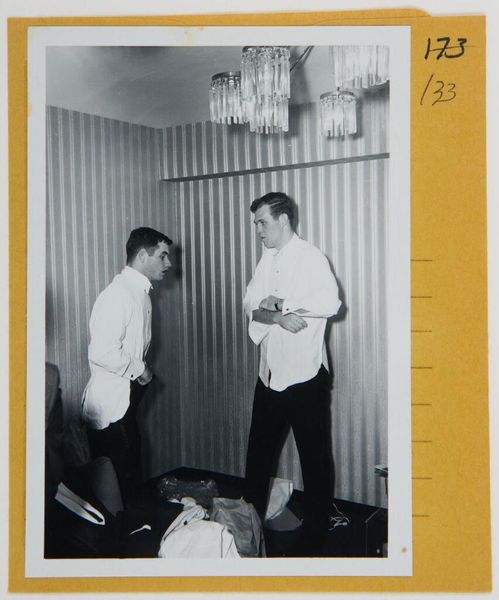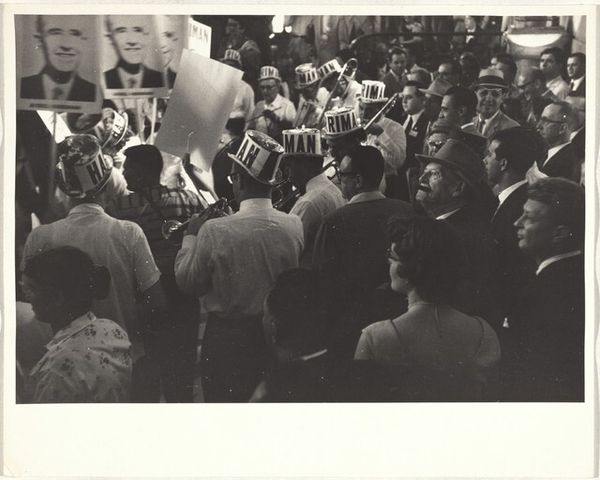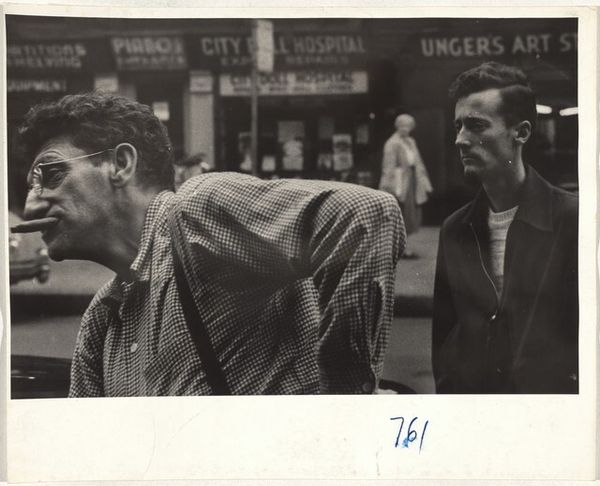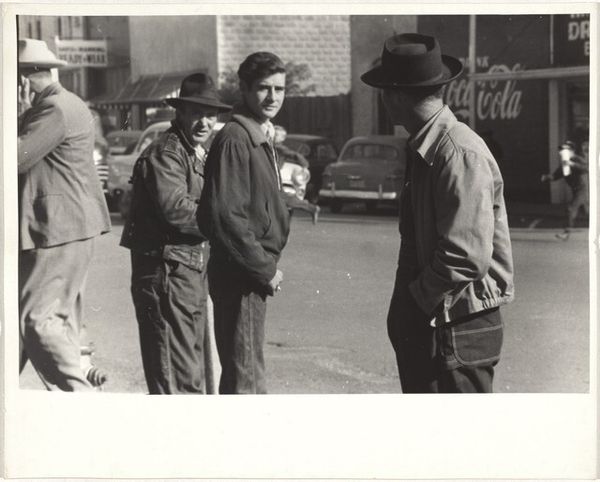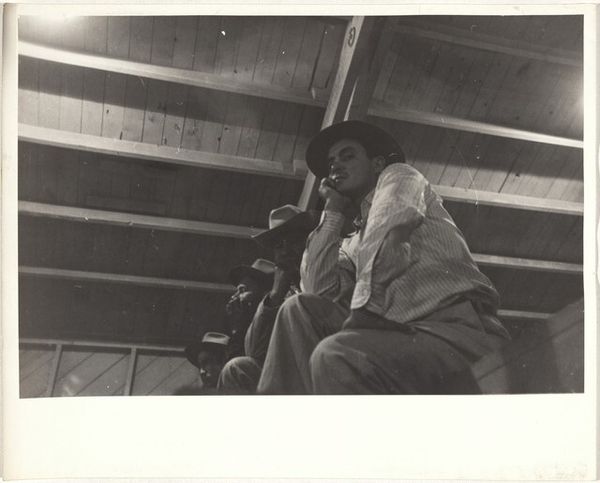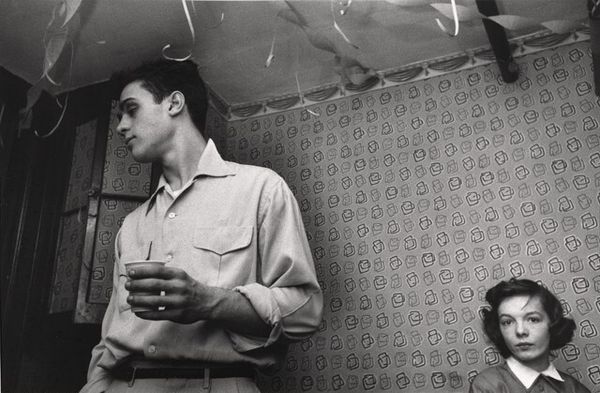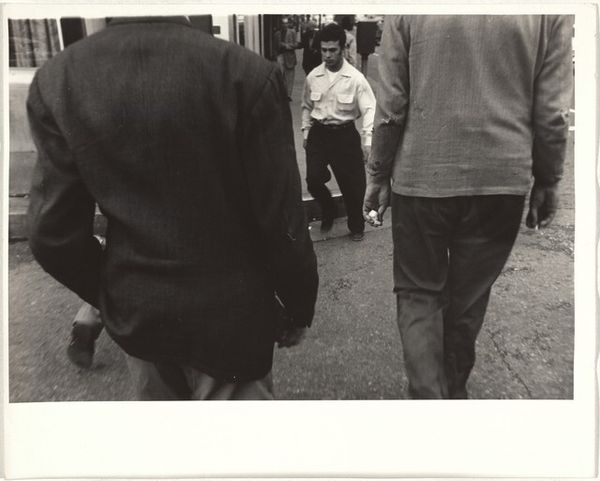
Dimensions: sheet: 20.3 x 25.2 cm (8 x 9 15/16 in.)
Copyright: National Gallery of Art: CC0 1.0
Curator: This gelatin-silver print, "Men in Tattoo Parlor--Los Angeles", was taken by Robert Frank in 1955. Look at the scene; what’s your initial response? Editor: It’s chaotic! A tight composition, faces peering out, a mix of expressions—anticipation, perhaps some nervousness? The background is just a dense field of tattoo designs. Curator: Frank captured a fleeting moment in mid-century American culture, right? Tattoo parlors, back then, weren't the mainstream places they are today. They occupied a very specific, often marginalized, social space. Considering the historical context, how does this affect our interpretation of the image? Editor: Precisely. There's an element of rebellion or transgression suggested, though it's subtle. The image complicates typical 1950s ideals, showing a more diverse male experience than popular culture usually displayed. Who were these men, and what brought them here? Were they military personnel? Did race play a part in who was or wasn't likely to be in a shop like this? I imagine it was segregated, as it's set in Los Angeles. Curator: Segregation's a key lens. Consider that photography at this time was a very immediate means of capturing societal change. There’s a casualness here that is almost defiant against a more traditional or exclusionary definition of American values, especially of masculinity. Editor: The photograph’s aesthetic also challenges established norms. It's not perfectly composed; the framing is slightly off-kilter, typical of Frank's style. He seems more interested in capturing the feeling of the moment than a sanitized depiction. Curator: Right, he was known for rejecting the idealized image. Frank gave voice to marginalized experiences, especially during a period of profound social and political shifts in the US. So, as we move away from this piece, what remains with you? Editor: The sense of being a fly on the wall—observing something intensely personal, perhaps even forbidden, in a society just on the cusp of significant change. Curator: And for me, it’s the awareness of how artistic practices can simultaneously document and question dominant cultural narratives. It serves as a stark reminder of a period of American history we still reckon with.
Comments
No comments
Be the first to comment and join the conversation on the ultimate creative platform.
